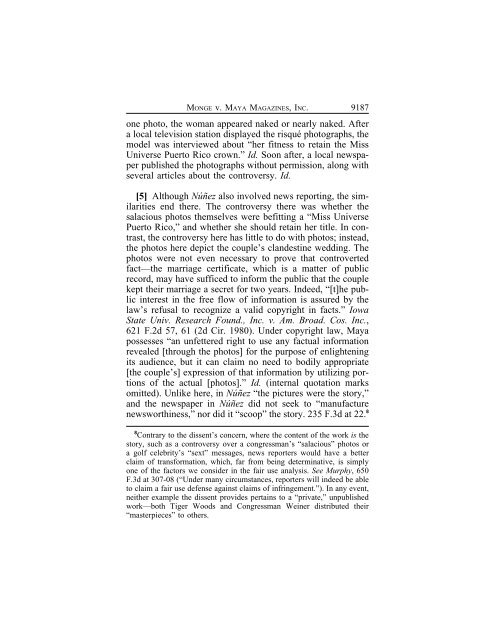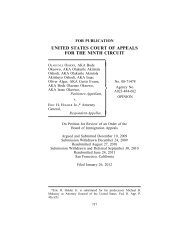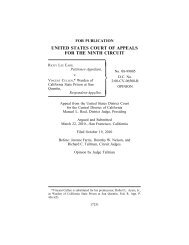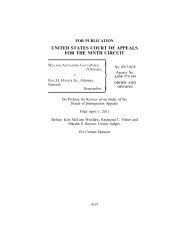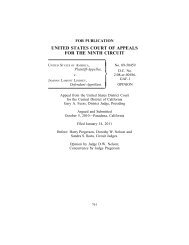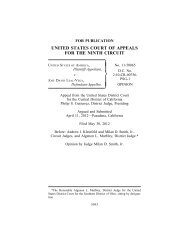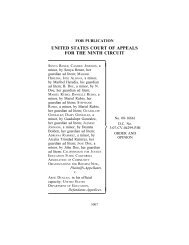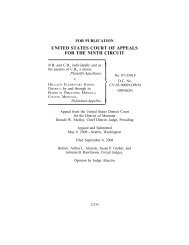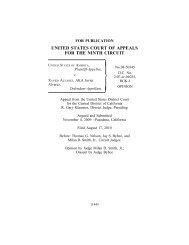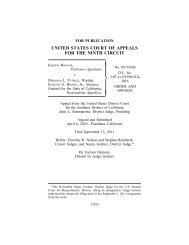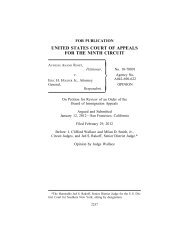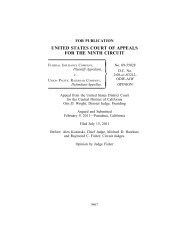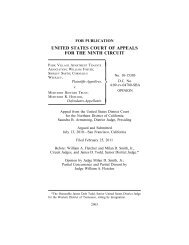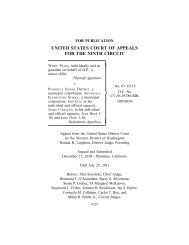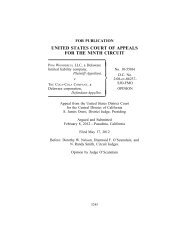NOELIA MONGE V. MAYA MAGAZINES, INC. - Ninth Circuit Court of ...
NOELIA MONGE V. MAYA MAGAZINES, INC. - Ninth Circuit Court of ...
NOELIA MONGE V. MAYA MAGAZINES, INC. - Ninth Circuit Court of ...
Create successful ePaper yourself
Turn your PDF publications into a flip-book with our unique Google optimized e-Paper software.
<strong>MONGE</strong> v. <strong>MAYA</strong> <strong>MAGAZINES</strong>, <strong>INC</strong>.<br />
9187<br />
one photo, the woman appeared naked or nearly naked. After<br />
a local television station displayed the risqué photographs, the<br />
model was interviewed about “her fitness to retain the Miss<br />
Universe Puerto Rico crown.” Id. Soon after, a local newspaper<br />
published the photographs without permission, along with<br />
several articles about the controversy. Id.<br />
[5] Although Núñez also involved news reporting, the similarities<br />
end there. The controversy there was whether the<br />
salacious photos themselves were befitting a “Miss Universe<br />
Puerto Rico,” and whether she should retain her title. In contrast,<br />
the controversy here has little to do with photos; instead,<br />
the photos here depict the couple’s clandestine wedding. The<br />
photos were not even necessary to prove that controverted<br />
fact—the marriage certificate, which is a matter <strong>of</strong> public<br />
record, may have sufficed to inform the public that the couple<br />
kept their marriage a secret for two years. Indeed, “[t]he public<br />
interest in the free flow <strong>of</strong> information is assured by the<br />
law’s refusal to recognize a valid copyright in facts.” Iowa<br />
State Univ. Research Found., Inc. v. Am. Broad. Cos. Inc.,<br />
621 F.2d 57, 61 (2d Cir. 1980). Under copyright law, Maya<br />
possesses “an unfettered right to use any factual information<br />
revealed [through the photos] for the purpose <strong>of</strong> enlightening<br />
its audience, but it can claim no need to bodily appropriate<br />
[the couple’s] expression <strong>of</strong> that information by utilizing portions<br />
<strong>of</strong> the actual [photos].” Id. (internal quotation marks<br />
omitted). Unlike here, in Núñez “the pictures were the story,”<br />
and the newspaper in Núñez did not seek to “manufacture<br />
newsworthiness,” nor did it “scoop” the story. 235 F.3d at 22. 8<br />
8 Contrary to the dissent’s concern, where the content <strong>of</strong> the work is the<br />
story, such as a controversy over a congressman’s “salacious” photos or<br />
a golf celebrity’s “sext” messages, news reporters would have a better<br />
claim <strong>of</strong> transformation, which, far from being determinative, is simply<br />
one <strong>of</strong> the factors we consider in the fair use analysis. See Murphy, 650<br />
F.3d at 307-08 (“Under many circumstances, reporters will indeed be able<br />
to claim a fair use defense against claims <strong>of</strong> infringement.”). In any event,<br />
neither example the dissent provides pertains to a “private,” unpublished<br />
work—both Tiger Woods and Congressman Weiner distributed their<br />
“masterpieces” to others.


